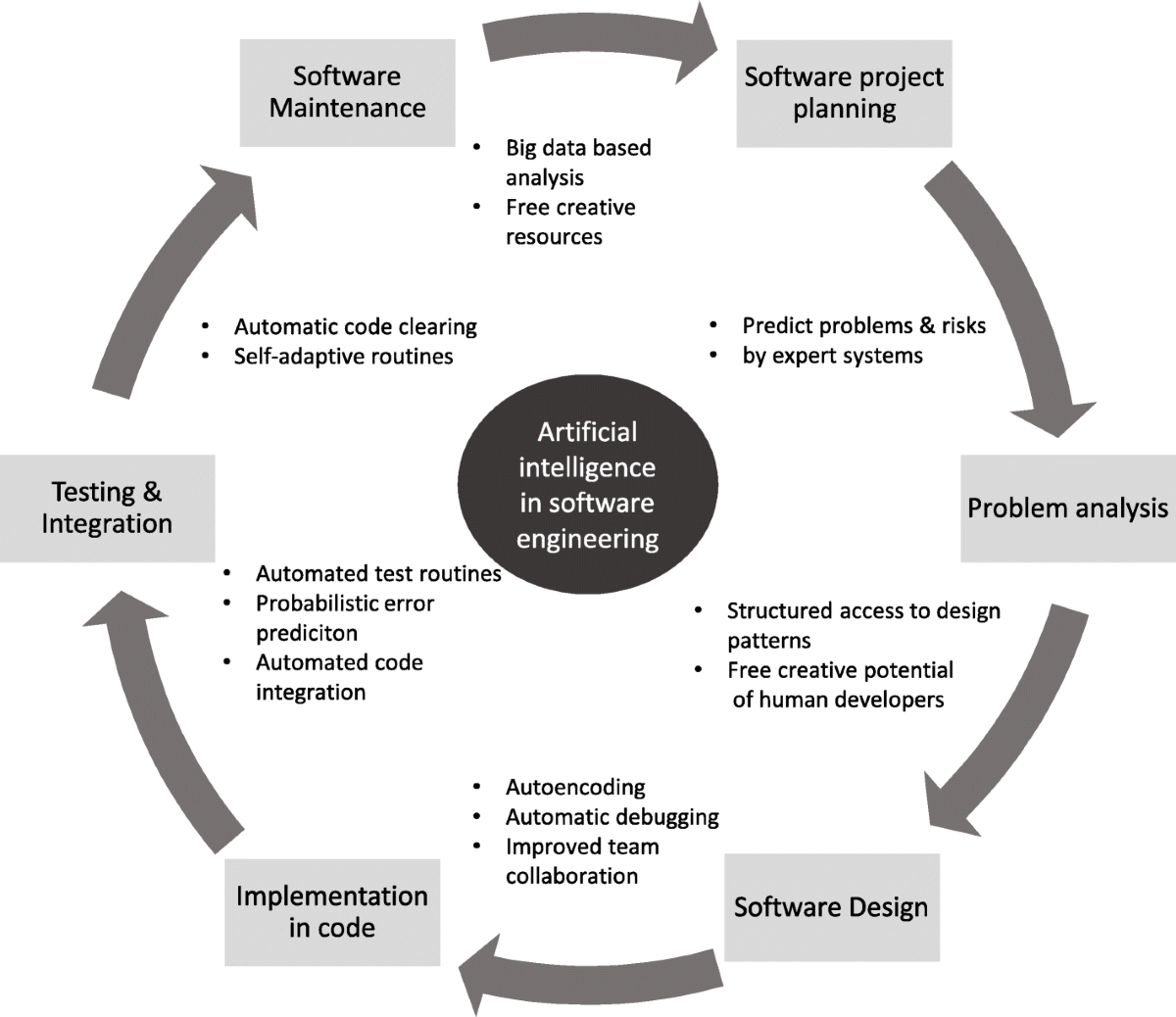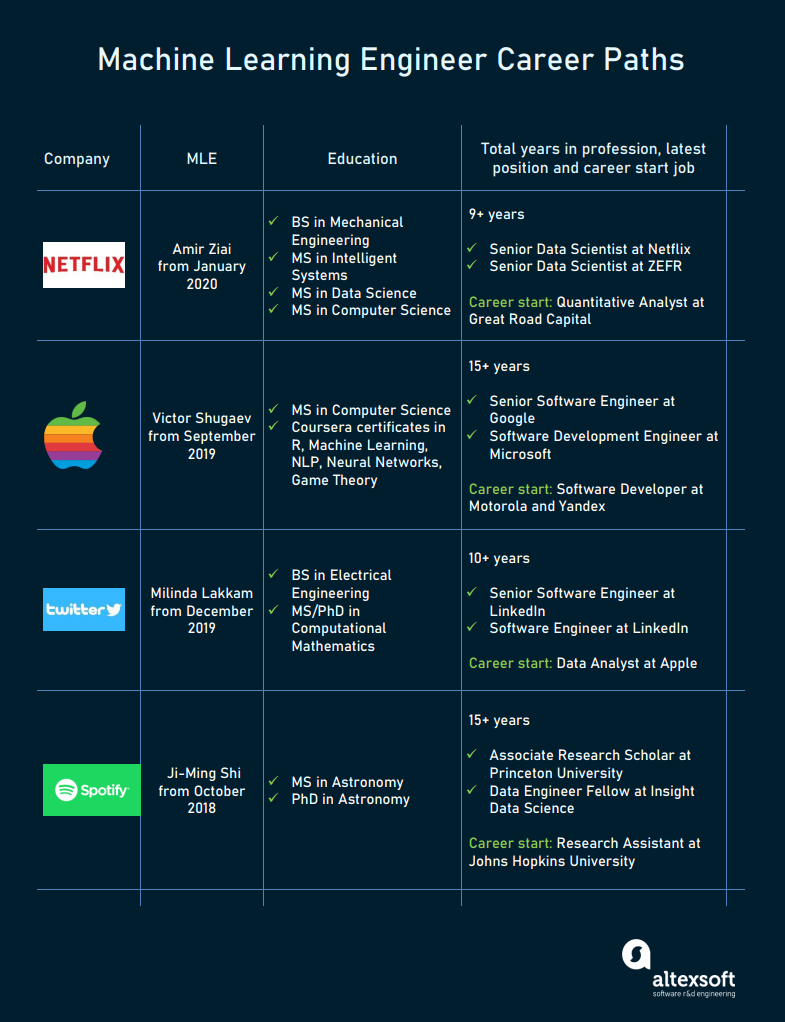All Categories
Featured
Table of Contents
You possibly understand Santiago from his Twitter. On Twitter, every day, he shares a great deal of practical points about machine learning. Alexey: Before we go into our main subject of moving from software application design to machine knowing, possibly we can start with your history.
I went to university, obtained a computer science level, and I started developing software program. Back then, I had no idea regarding equipment understanding.
I know you've been utilizing the term "transitioning from software engineering to machine learning". I like the term "contributing to my capability the maker learning skills" more because I think if you're a software engineer, you are already giving a great deal of value. By including maker understanding currently, you're boosting the impact that you can carry the sector.
That's what I would do. Alexey: This returns to one of your tweets or perhaps it was from your program when you compare two techniques to understanding. One approach is the trouble based approach, which you simply spoke about. You locate a trouble. In this instance, it was some issue from Kaggle concerning this Titanic dataset, and you simply learn just how to fix this issue using a particular device, like decision trees from SciKit Learn.
Some Known Facts About Machine Learning Engineer Course.
You first discover mathematics, or linear algebra, calculus. When you recognize the math, you go to maker understanding concept and you discover the concept.
If I have an electrical outlet below that I need replacing, I do not wish to go to college, invest four years comprehending the mathematics behind electricity and the physics and all of that, simply to change an electrical outlet. I would instead begin with the outlet and locate a YouTube video clip that helps me experience the trouble.
Santiago: I really like the concept of starting with a problem, trying to toss out what I recognize up to that issue and recognize why it doesn't function. Order the devices that I require to fix that issue and begin excavating deeper and deeper and deeper from that factor on.
Alexey: Perhaps we can chat a bit concerning finding out resources. You discussed in Kaggle there is an introduction tutorial, where you can get and learn how to make decision trees.
The only requirement for that training course is that you know a bit of Python. If you're a developer, that's a fantastic base. (38:48) Santiago: If you're not a designer, after that I do have a pin on my Twitter account. If you go to my profile, the tweet that's mosting likely to be on the top, the one that states "pinned tweet".
A Biased View of Advanced Machine Learning Course

Even if you're not a developer, you can begin with Python and function your way to more artificial intelligence. This roadmap is concentrated on Coursera, which is a system that I actually, actually like. You can investigate all of the courses for cost-free or you can pay for the Coursera subscription to obtain certifications if you intend to.
Alexey: This comes back to one of your tweets or perhaps it was from your course when you compare 2 techniques to discovering. In this situation, it was some problem from Kaggle regarding this Titanic dataset, and you just find out just how to solve this problem using a particular device, like choice trees from SciKit Learn.

You first learn mathematics, or direct algebra, calculus. Then when you understand the math, you most likely to artificial intelligence theory and you discover the concept. Then 4 years later, you ultimately come to applications, "Okay, exactly how do I make use of all these 4 years of mathematics to solve this Titanic trouble?" Right? So in the former, you kind of conserve yourself some time, I assume.
If I have an electrical outlet here that I need replacing, I do not wish to go to university, invest four years comprehending the mathematics behind electricity and the physics and all of that, simply to alter an electrical outlet. I would rather begin with the outlet and find a YouTube video that assists me go through the issue.
Santiago: I actually like the idea of starting with a problem, trying to throw out what I recognize up to that problem and recognize why it does not work. Order the devices that I need to fix that issue and begin excavating much deeper and deeper and deeper from that factor on.
To ensure that's what I normally advise. Alexey: Perhaps we can chat a little bit about discovering resources. You discussed in Kaggle there is an introduction tutorial, where you can obtain and learn just how to make choice trees. At the start, prior to we began this interview, you pointed out a couple of publications.
How To Become A Machine Learning Engineer Can Be Fun For Anyone
The only requirement for that course is that you recognize a little bit of Python. If you go to my profile, the tweet that's going to be on the top, the one that says "pinned tweet".
Also if you're not a developer, you can start with Python and function your means to more device discovering. This roadmap is concentrated on Coursera, which is a system that I really, really like. You can investigate every one of the programs for complimentary or you can pay for the Coursera registration to obtain certifications if you intend to.
The Definitive Guide for How To Become A Machine Learning Engineer
So that's what I would do. Alexey: This comes back to among your tweets or maybe it was from your course when you contrast 2 approaches to learning. One technique is the trouble based technique, which you just chatted about. You find an issue. In this situation, it was some trouble from Kaggle about this Titanic dataset, and you simply discover exactly how to address this problem making use of a certain device, like choice trees from SciKit Learn.

You first discover math, or linear algebra, calculus. When you recognize the math, you go to device understanding concept and you find out the theory. Four years later, you ultimately come to applications, "Okay, how do I make use of all these four years of mathematics to fix this Titanic issue?" ? In the former, you kind of save on your own some time, I think.
If I have an electric outlet right here that I need changing, I don't intend to most likely to university, invest four years comprehending the mathematics behind power and the physics and all of that, just to change an electrical outlet. I would certainly rather start with the outlet and discover a YouTube video that assists me experience the problem.
Santiago: I actually like the concept of beginning with a trouble, trying to toss out what I understand up to that problem and recognize why it doesn't function. Order the tools that I need to resolve that issue and begin excavating much deeper and deeper and much deeper from that factor on.
To make sure that's what I normally suggest. Alexey: Maybe we can speak a little bit about discovering sources. You stated in Kaggle there is an intro tutorial, where you can get and learn just how to make decision trees. At the start, prior to we started this interview, you mentioned a pair of publications.
Indicators on Machine Learning Course You Need To Know
The only need for that program is that you know a little bit of Python. If you go to my account, the tweet that's going to be on the top, the one that states "pinned tweet".
Also if you're not a developer, you can begin with Python and function your means to even more machine discovering. This roadmap is concentrated on Coursera, which is a system that I truly, really like. You can investigate every one of the programs completely free or you can pay for the Coursera registration to obtain certificates if you wish to.
That's what I would certainly do. Alexey: This comes back to among your tweets or possibly it was from your course when you compare two methods to knowing. One approach is the issue based technique, which you simply discussed. You locate a problem. In this case, it was some problem from Kaggle about this Titanic dataset, and you simply learn exactly how to address this issue using a details device, like decision trees from SciKit Learn.
You first discover mathematics, or linear algebra, calculus. Then when you recognize the math, you most likely to device knowing theory and you find out the theory. 4 years later, you ultimately come to applications, "Okay, how do I use all these four years of math to solve this Titanic problem?" ? So in the former, you kind of save yourself a long time, I assume.
Getting My Machine Learning To Work
If I have an electric outlet here that I require replacing, I don't intend to most likely to university, invest four years comprehending the math behind electricity and the physics and all of that, just to change an electrical outlet. I would certainly rather start with the electrical outlet and discover a YouTube video that helps me undergo the problem.
Santiago: I actually like the concept of starting with a trouble, attempting to throw out what I recognize up to that trouble and understand why it doesn't function. Grab the tools that I need to fix that issue and begin digging deeper and much deeper and much deeper from that point on.

Alexey: Possibly we can talk a little bit concerning finding out resources. You pointed out in Kaggle there is an intro tutorial, where you can obtain and discover just how to make choice trees.
The only need for that training course is that you know a little bit of Python. If you go to my profile, the tweet that's going to be on the top, the one that states "pinned tweet".
Even if you're not a designer, you can start with Python and work your means to more machine understanding. This roadmap is concentrated on Coursera, which is a platform that I actually, really like. You can investigate every one of the programs completely free or you can spend for the Coursera registration to get certificates if you intend to.
Table of Contents
Latest Posts
What To Expect In A Faang Technical Interview – Insider Advice
How To Write A Cover Letter For A Faang Software Engineering Job
How To Ace The Software Engineering Interview – Insider Strategies
More
Latest Posts
What To Expect In A Faang Technical Interview – Insider Advice
How To Write A Cover Letter For A Faang Software Engineering Job
How To Ace The Software Engineering Interview – Insider Strategies